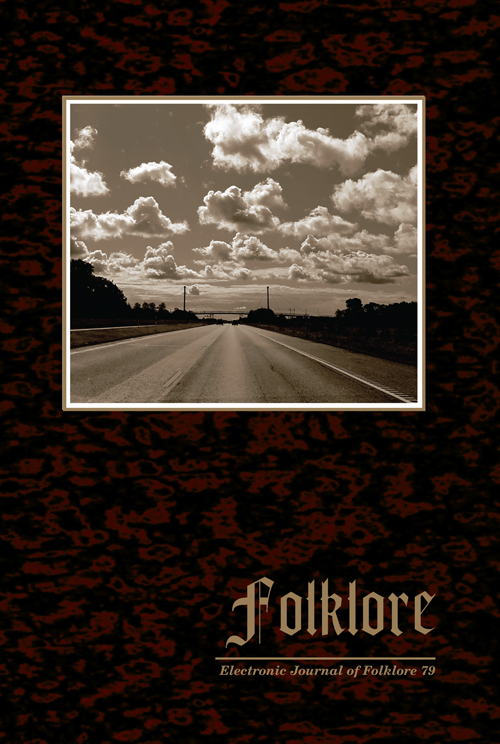Graphic Aspects of Mobility: Folkloristic-Ethnological Drawings as a Starting Point for Discussing Mobility and Borders
Graphic Aspects of Mobility: Folkloristic-Ethnological Drawings as a Starting Point for Discussing Mobility and Borders
Author(s): Kari KorolainenSubject(s): Customs / Folklore, Cultural Anthropology / Ethnology, Culture and social structure
Published by: Eesti Kirjandusmuuseum
Keywords: archival materials; art making; border studies; borderscapes; cartoons; drawings; folklore studies; material culture; mobility; multimodal analysis;
Summary/Abstract: This paper discusses mobility within early twentieth-century folklore descriptions. Mobility is approached in terms of the culture of motion (Naukkarinen 2006), and in relation to borders and borderscapes (Brambilla 2015; Dell´Agnese & Amilhat Szary 2015; Perera 2007; Rajaram & Grundy-Warr 2007) as well as stretched environments (Povrzanović Frykman & Humbracht 2013). The objective is to examine how mobility appears in former folklore contexts in case the viewpoint of drawing is concerned. Another aim is to combine art making with the analysis. The material is based on a folklore survey conducted by the Finnish Literature Society. The focus is on those survey responses that relate to eastern Finland and Finnish and Russian Karelia. Multimodal analysis is used for analyzing the relationship between the featured drawings and texts. Thus, the results demonstrate how the analysis, when accompanied by art making, could provide a point of departure for developing a multidisciplinary approach to discuss mobility and borders. The article illustrates how the materials, the analysis, and creative work intertwine in assessing presumptions and redirecting interpretations.
Journal: Folklore: Electronic Journal of Folklore
- Issue Year: 2020
- Issue No: 79
- Page Range: 115-136
- Page Count: 22
- Language: English

